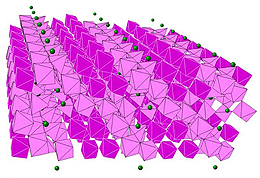Research Abstract
準一次元導体におけるウィーデマン・フランツ則の著しい破れ
電荷担体が一次元に空間的に閉じ込められると、従来のフェルミ液体理論は破綻する。そのような朝永・ラッティンジャー液体では、準粒子は、独立して異なる速度で伝播するスピンと電荷の別個の集団励起に置き換えられる。
Gross violation of the Wiedemann–Franz law in a quasi-one-dimensional conductor
2011年7月19日 Nature Communications 2 : 396 doi: 10.1038/ncomms1406

電荷担体が一次元に空間的に閉じ込められると、従来のフェルミ液体理論は破綻する。そのような朝永・ラッティンジャー液体では、準粒子は、独立して異なる速度で伝播するスピンと電荷の別個の集団励起に置き換えられる。スピン–電荷分離の証拠は存在するが、バルクの低エネルギープローブでは、朝永・ラッティンジャーとフェルミ液体の物理をまだ区別できていない。今回我々は、準一次元的なLi0.9Mo6O17の金属相における熱ホール伝導度と電気ホール伝導度の比が温度の低下と共に発散し、従来の金属に見られるよりも5桁高い値に達することを実験的に示す。温度依存性とこの比の大きさの双方が、朝永・ラッティンジャー液体の理論と矛盾しない。バルクの三元固体においてスピン–電荷分離がこのように劇的に現れたことから、第二や第三の次元との結合が回復したときに、どのようにフェルミオン準粒子描像が回復し、時間スケールがどのくらいになるかを調べるまたとない機会が得られる。
- ブリストル大学(英国)
- 理化学研究所
- 杭州師範大学(中国)
- ラトガース大学(米国)
When charge carriers are spatially confined to one dimension, conventional Fermi-liquid theory breaks down. In such Tomonaga–Luttinger liquids, quasiparticles are replaced by distinct collective excitations of spin and charge that propagate independently with different velocities. Although evidence for spin–charge separation exists, no bulk low-energy probe has yet been able to distinguish successfully between Tomonaga&ndashLuttinger and Fermi-liquid physics. Here we show experimentally that the ratio of the thermal and electrical Hall conductivities in the metallic phase of quasi-one-dimensional Li0.9Mo6O17 diverges with decreasing temperature, reaching a value five orders of magnitude larger than that found in conventional metals. Both the temperature dependence and magnitude of this ratio are consistent with Tomonaga&ndashLuttinger liquid theory. Such a dramatic manifestation of spin–charge separation in a bulk three-dimensional solid offers a unique opportunity to explore how the fermionic quasiparticle picture recovers, and over what time scale, when coupling to a second or third dimension is restored.

